
-
 Sweeping Vietnam internet law comes into force
Sweeping Vietnam internet law comes into force
-
Pope kicks off Christmas under shadow of war

-
 Catholics hold muted Christmas mass in Indonesia's Sharia stronghold
Catholics hold muted Christmas mass in Indonesia's Sharia stronghold
-
Japan's top diplomat in China to address 'challenges'

-
 Thousands attend Christmas charity dinner in Buenos Aires
Thousands attend Christmas charity dinner in Buenos Aires
-
Demand for Japanese content booms post 'Shogun'

-
 As India's Bollywood shifts, stars and snappers click
As India's Bollywood shifts, stars and snappers click
-
Mystery drones won't interfere with Santa's work: US tracker
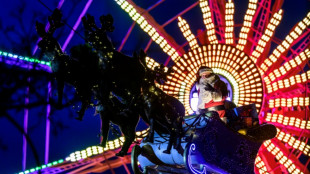
-
 Djokovic eyes more Slam glory as Swiatek returns under doping cloud
Djokovic eyes more Slam glory as Swiatek returns under doping cloud
-
Australia's in-form Head confirmed fit for Boxing Day Test

-
 Brazilian midfielder Oscar returns to Sao Paulo
Brazilian midfielder Oscar returns to Sao Paulo
-
'Wemby' and 'Ant-Man' to make NBA Christmas debuts

-
 US agency focused on foreign disinformation shuts down
US agency focused on foreign disinformation shuts down
-
On Christmas Eve, Pope Francis launches holy Jubilee year

-
 'Like a dream': AFP photographer's return to Syria
'Like a dream': AFP photographer's return to Syria
-
Chiefs seek top seed in holiday test for playoff-bound NFL teams

-
 Panamanians protest 'public enemy' Trump's canal threat
Panamanians protest 'public enemy' Trump's canal threat
-
Cyclone death toll in Mayotte rises to 39

-
 Ecuador vice president says Noboa seeking her 'banishment'
Ecuador vice president says Noboa seeking her 'banishment'
-
Leicester boss Van Nistelrooy aware of 'bigger picture' as Liverpool await

-
 Syria authorities say armed groups have agreed to disband
Syria authorities say armed groups have agreed to disband
-
Maresca expects Man City to be in title hunt as he downplays Chelsea's chancs

-
 South Africa opt for all-pace attack against Pakistan
South Africa opt for all-pace attack against Pakistan
-
Guardiola adamant Man City slump not all about Haaland

-
 Global stocks mostly higher in thin pre-Christmas trade
Global stocks mostly higher in thin pre-Christmas trade
-
Bethlehem marks sombre Christmas under shadow of war

-
 11 killed in blast at Turkey explosives plant
11 killed in blast at Turkey explosives plant
-
Indonesia considers parole for ex-terror chiefs: official

-
 Postecoglou says Spurs 'need to reinforce' in transfer window
Postecoglou says Spurs 'need to reinforce' in transfer window
-
Le Pen says days of new French govt numbered

-
 Villa boss Emery set for 'very difficult' clash with Newcastle
Villa boss Emery set for 'very difficult' clash with Newcastle
-
Investors swoop in to save German flying taxi startup

-
 How Finnish youth learn to spot disinformation
How Finnish youth learn to spot disinformation
-
12 killed in blast at Turkey explosives plant

-
 Panama leaders past and present reject Trump's threat of Canal takeover
Panama leaders past and present reject Trump's threat of Canal takeover
-
Hong Kong police issue fresh bounties for activists overseas

-
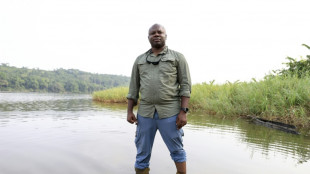 Saving the mysterious African manatee at Cameroon hotspot
Saving the mysterious African manatee at Cameroon hotspot
-
India consider second spinner for Boxing Day Test

-
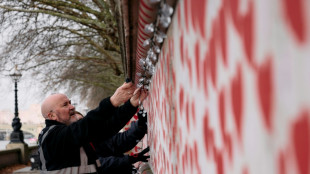 London wall illuminates Covid's enduring pain at Christmas
London wall illuminates Covid's enduring pain at Christmas
-
Poyet appointed manager at South Korea's Jeonbuk

-
 South Korea's opposition vows to impeach acting president
South Korea's opposition vows to impeach acting president
-
The tsunami detection buoys safeguarding lives in Thailand
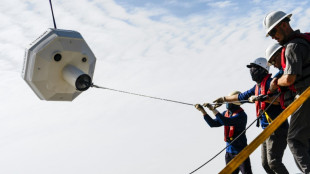
-
 Teen Konstas to open for Australia in Boxing Day India Test
Teen Konstas to open for Australia in Boxing Day India Test
-
Asian stocks mostly up after US tech rally

-
 US panel could not reach consensus on US-Japan steel deal: Nippon
US panel could not reach consensus on US-Japan steel deal: Nippon
-
The real-life violence that inspired South Korea's 'Squid Game'
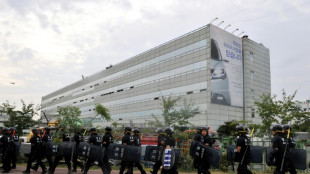
-
 Blogs to Bluesky: social media shifts responses after 2004 tsunami
Blogs to Bluesky: social media shifts responses after 2004 tsunami
-
Tennis power couple de Minaur and Boulter get engaged

-
 Supermaxi yachts eye record in gruelling Sydney-Hobart race
Supermaxi yachts eye record in gruelling Sydney-Hobart race
-
Hawaii's Kilauea volcano erupts, spewing columns of lava


Hamburg transforms its huge 'ugly wart' Nazi bunker
A huge former Nazi bunker in Hamburg has been transformed into a leisure complex filled with restaurants, a concert hall and roof terraces where visitors can relax in an orchard.
It is a novel answer to the question that has long vexed Germany -- what to do with former Nazi sites that are too complex to demolish?
The five storeys of the imposing concrete structure in Hamburg's St Pauli district, one of the largest bunkers in the world, can now be accessed via steps bolted onto the outside of the building.
The complex includes a hotel with 134 bedrooms, a 2,000-seat concert space and allotment plots for locals.
"The idea of raising the height of the building with greenery was to add something peaceful and positive to this massive block left over from the Nazi dictatorship," said Anita Engels from the Hilldegarden neighbourhood association, which supported the project.
Almost 40 metres (130 feet) tall and weighing 76,000 tonnes, the St Pauli bunker has exterior walls 2.5 metres thick and a roof consisting of 3.5 metres of reinforced concrete.
The building was one of eight "flak towers" constructed by Hitler during the Third Reich, with anti-aircraft guns standing where the apple trees now grow.
- Triple threat -
Three were in Berlin, two in Hamburg and three in Vienna.
"They protected the government quarter in Berlin, the port facilities in Hamburg and the historic centre that Hitler loved in Vienna," said historian Michael Foedrowitz.
The huge structures also functioned as shelters, as well as serving as a kind of architectural "propaganda" about the power of Hitler's rule, he said.
The flak tower at Berlin zoo is the only one that has been completely destroyed, since the explosives required would pose too big a risk for the heavily populated areas where the others stand.
After the war, the bunker in St Pauli was initially used as accommodation for homeless people before being transformed into office space for media and advertising companies in the 1950s.
The lower floors have more recently been home to a popular nightclub, a radio station and a climbing gym.
"But that didn't lead to the story of the bunker being told, to critical reflection. There wasn't even a sign at the entrance," said Engels.
As part of the renovation project launched in 2019 by the city of Hamburg and private investors, Hilldegarden has been helping to bring the history of the building back to life.
The association has collected testimonies from people who lived in the bunker during and after the war as well as records of the hundreds of forced labourers who built the structure in just 300 days in 1942.
On the first floor, an exhibition now presents the history of the site.
"In Berlin, up to 60,000 civilians were counted taking refuge in a pair of towers designed to hold around 30,000 people -- the size of a small town," historian Foedrowitz said.
- Massive bombing -
The St Pauli complex housed up to 25,000 civilians including during the Allied bombing raids of Operation Gomorrah in July 1943, which devastated Hamburg.
Brigitte Schulze, a 72-year-old pensioner who came to visit the refurbished bunker, said she felt it was "good to keep this history alive, especially as the witnesses are disappearing".
"And the setting is pleasant, with the park and the trees," she said.
Schulze lives near Hamburg but it had never occurred to her before to visit the building, which she described as "just an ugly wart".
She was one of thousands of visitors to the new complex in its first month.
A few years ago, Hamburg's second flak tower was converted into a mini power station producing electricity from renewable sources.
In Berlin, the towers in Friedrichshain and Humboldthain have been buried beneath unassuming artificial hills in two city parks.
E.Ramalho--PC
